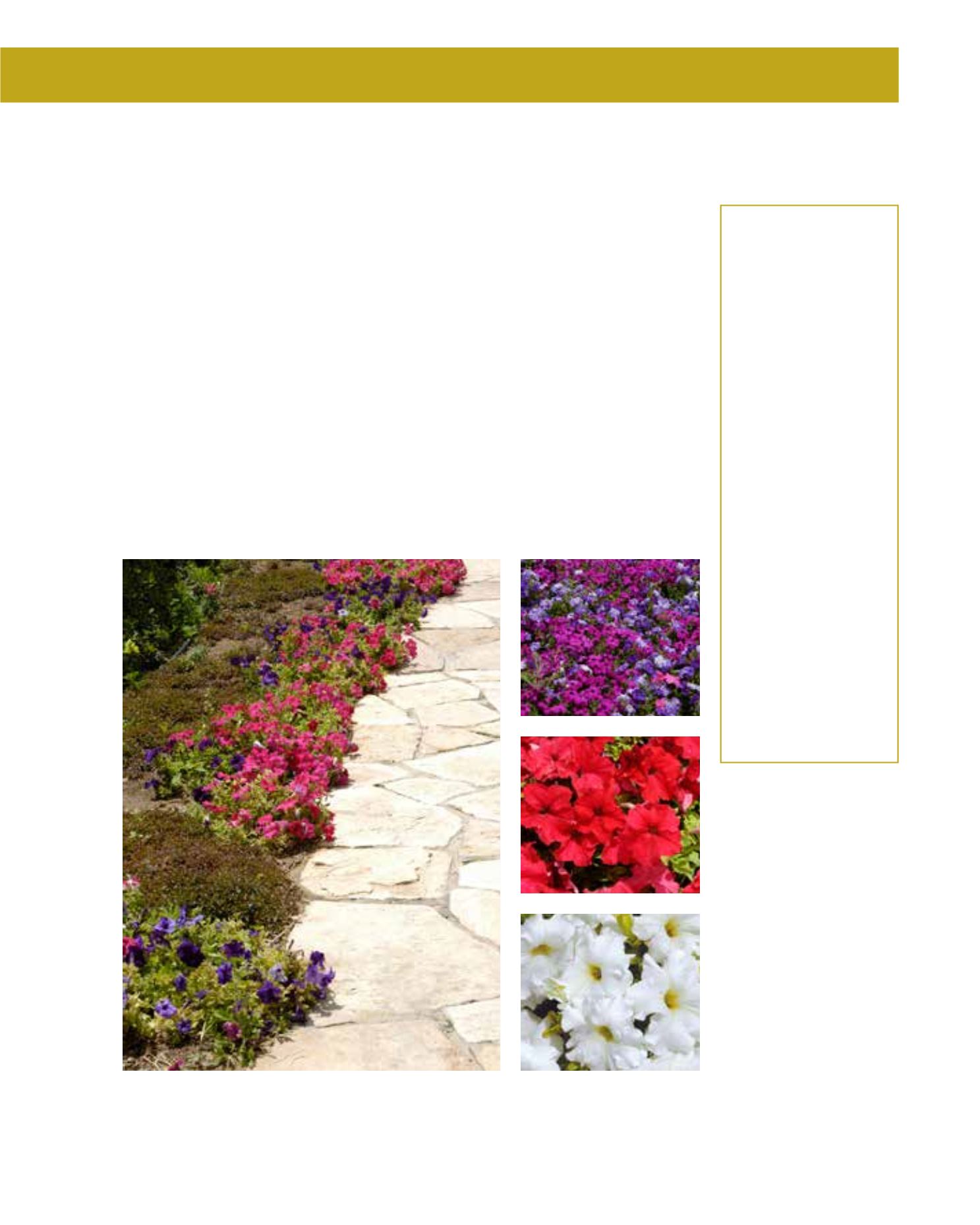

GENERAL
Origin
:
sub-tropical,
tropical
Humidity
:
semi-arid, semi-
humid
Propagation :
sowing and
pricking out
Maintenance :
moderate
CONDITIONS
Urban climate :
resistant
Dessication :
vulnerable
Stagnant water :
vulnerable
Irrigation
:
high
Salinity/ppm :
low (700 ppm)
Hardiness
:
+3°C
SHAPE
Type
:
annual
Height
:
0.15 m-0.25 m
Spread
:
0.2 m-0.8 m
Foliage
:
evergreen,
evergreen,
evergreen
FLOWER
Colour
:
yellow, red,
purple, pink,
violet, blue,
white, secondary:
yellow
Size
:
5 cm - 8 cm
Period
:
April - November
FRUIT
Type of fruit :
capsule
Fruit size
:
1 cm
Petunia has no other common name. Its area of distribution is South America. This ornamental
plant is popular as a winter bedding plant in Arriyadh. It is a prostrate annual which normally
grows in tropical or sub-tropical areas. It reaches a height of 15 cm, but the many branches grow
usually to a length of 70 cm, creeping over the ground. The leaves are fresh green and they have
an entire and ovate shape. The attractive hornlike flowers are between 5 and 8 cm in size. They
are available in many different colours such as red, yellow and purple. All parts of the plant are
slightly sticky. Petunias do not like stagnant water; their roots will start to rot, and they will start
to fail. Nevertheless, they need sufficient irrigation with a low salinity content. Petunias are pro-
pagated by cuttings. This ornamental plant can withstand urban microclimates and temporary
desiccation. It will yield attractive plant arrangements in pedestrian precincts, container planting,
urban areas, public open spaces and street planting, as well as in parks or private gardens. This
plant can be used as edging plant, for linear planting, as a groundcover or for grouped or massed
planting.
228
Petunia x atkinsiana,
Solanaceae
Petunia
















